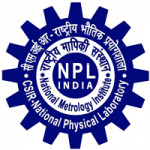
सीएसआईआर-राष्ट्रीय भौतिक प्रयोगशाला
CSIR-National Physical Laboratory

Optical Radiation Metrology
Optical radiation measurements cover the wavelength region of electro-magnetic spectrum from 200nm to 2500nm. The wavelength region from 200 nm to 2500nm is maximally used for measurement of many interlinking disciplines. As Radiometric measurements are used in a wide range of industries including opto-electronics, telecommunications, lighting, space and in health and safety, precision measurements are required for specification for systems, for quality control in industries and in scientific research. The objective of this section is to establish, maintain, and upgrade the existing base unit of optical radiation, i.e., candela and to provide calibration facilities for various photometric parameters namely luminous flux, illuminance, luminance, luminous intensity, detector responsivity, color temperature and radiometric parameters namely spectral radiance and spectral irradiance in the range from 200nm to 2500nm.
In addition, this section also provides measurement facilities for spectroscopic parameters namely spectral reflectance, spectral transmittance, absorbance, and polystyrene film calibration by FTIR. Other calibration facilities include calibration of thermo-vision camera, black-body and NIR related measurements.
Variable temperature blackbody, Goniophotometer, Fourier Transform NIR and IR spectrophotometer, Raman-spectroscope, spectral irradiance measurement setup, spectrophotometers, corretected photon metrology setup, LED measurement setup, various standard lamps and detectors.
Blackbody
Source based primary standard of spectral radiance in the form of a variable temperature blackbody has been established. This blackbody works in the temperature range of 1800K – 3200K with temperature stability of ± 0.2K. Its emissivity is 0.999, and exhibits radiance uniformity within 0.1%, in the wavelength range 0.2 μm-2.5 μm. The uncertainty in spectral radiance measurement using this blackbody is 0.3-0.5% in the wavelength range 0.2 μm-0.4 μm, and 0.1-0.3% in the wavelength range 0.4 μm-2.5 μm, respectively. The established facility is shown in the Fig. 1.

Fig.1: Blackbody Setup
Luminous Intensity, Illuminance and Illuminance Responsivity Measurement
Luminous intensity, illuminance and illuminance responsivity measurements are carried out using 3.0 m optical bench. The optical bench and other measurement instruments are shown in Fig. 2.
Fig. 2(a) illustrates the optical bench while, Figs. 2(b) and 2(c) shows the standard intensity light source and standard detector and illuminance meter respectively. Reference scale for luminous intensity is maintained in the form of tungsten filament lamps of very high quality. These lamps are free from manufacturing defects, stable and their electric and photometric parameters remain unchanged over a length of time. The NPL luminous intensity scale is maintained at 2856 K and 2800 K (nominal) correlated color temperatures. To check the compatibility of the scales, reference standards lamps for luminous intensity are use to calibrated periodically from PTB, Germany. The photometer used is a PTB calibrated V(λ) corrected Si photodetector with its spectral response approximately matching the CIE luminous efficacy function.

Fig. 2. Luminous Intensity and Illuminance Measurement Setup
Luminous Flux Calibration Facilities
Absolute luminous flux measurement is carried out by using Gonio-photometer (see Fig. 3(a)). This automatic system is used to prepare working standards for various lamps. Using these working standards, the luminous flux calibration is performed for lamp and lighting industries. For luminous flux measurements we use 3.0 m (Fig. 3(b)) and 1.0 m (Fig. 3(c)) diameter integrating spheres.
To check the compatibility of the scales, reference standards lamps i.e., Polaron, 110V, 200W for luminous flux are use to calibrated periodically from PTB and BIPM, Germany.

Fig. 3. Luminous Flux Measurement Setup
Color Temperature and Chromaticity Coordinates Measurements
Reference scales for color temperature measurement are of very high quality. These lamps are free from manufacturing defects, stable and their electric and photometric parameters remain unchanged over a length of time. Incandescent lamp standards of color temperature are calibrated on a photometric bench by comparing the ratios of the portion of the visible spectrum in the red and the blue portion of the spectrum for the test and the standard source or by measuring the temperature directly using a tristimulus colorimeter. The measurement setup is shown in Fig. 4. Tristimulus colorimeter head is elaborated in Fig. 4 (b).

Fig. 4. Color Temperature and Color Coordinate Measurement Setup
Luminance Measurement
Luminance standard is created by ab-initio method by using a flux standard. The lamps to be used for deriving luminous scale were calibrated for their total luminous flux F using NPL reference standards. The luminous flux leaving the aperture was measured using a silicon photo-diode photometer provided with a filter. Luminance meter is calibrated against this standard of luminance using luminance standard. In most of the calibrations, the LMT luminance standard is used and to reduce the luminance value spectrally non-selective neutral density filters of different transmissions are used. The calibration setup is shown in Fig. 5.

Fig. 5. Luminance Measurement Setup
We have proposed a unique method for producing non-diverging optical array and elliptical hollow beam in a controlled manner using aberration patterns generated from oblique illumination of axicon. The optical arrays with propagation invariance property are persisted for short ranges in the focal depth, whereas diverging array with a constant number of bright spots is produced beyond bottle beam. The measured variation in the geometrical parameters of obliquely illuminated axicon setup has facilitated precise control on the dimension of optical array and shape of the elliptical hollow beam, respectively. The theoretical analysis confirms the experimental results for the generation of short-range non-diverging optical array and elliptical dark hollow beam with fine control. To the best of our knowledge, this is the first experimental approach to extend the potential of axicon beyond generation of Bessel and circular hollow beams.

Fig. 6. Axicon Aberration Leading to Non-diverging Optical Array
Infrared spectroscopic study for tumor diagnosis – Dr. Ranjana Mehrotra
Infrared spectra of normal and malignant breast tissues are measured in the 600 cm-1 to 4000 cm-1 region. The measured spectroscopic features which are the spectroscopic fingerprints of the tissues contain the vital information about the malignant and normal tissues. The novelty of this study is that from the spectroscopic data we could differentiate malignant tissue from the normal one. We analyzed Fourier Transform Infrared (FTIR) data on twenty five cases of infiterating ductal carcinoma of breast with different grades of malignancy from patients of different age groups. Infrared spectra demonstrate significant spectral differences between the normal and the cancerous breast tissues. In particular changes in frequency and intensity in the spectra of protein, nucleic acid and glycogen vibrational modes as well as the band intensity ratios for lipid/proteins, protein/ nucleic acids, protein/glycogen are observed. This allows us to make a qualitative and semi quantitative evaluation of the changes in proliferation activity from normal to diseased tissue.
Polarization study of optical vortices – V. K. Jaiswal
We have demonstrated new technique for obtaining polarization entangled photons with classical optics which also depicts properties of polarization discrimination. Classical analogue of quantum entanglement is also shown in the form of inseparability between polarization and spatial modulation. Polarization study of Gaussian and vortex beam shows that orbital angular momentum and spin angular momentum of photons are not coupled in the process.
Switching light with light – Dr. Parag Sharma
Theoretical analyses of laser induced nonlinear absorption processes in rhodopsin protein molecules have been performed. The results validate the feasibility of all-optical switching operation ‘Switching light with light’, in these protein molecules in very simple pump-probe geometry. The switching speed has been shown to be enhanced from milliseconds to nanoseconds time scale. The performance of the switch in terms of contrast has also been enhanced by optimizing the concentration of molecules.
Mr. V. K. Jaiswal
Sr. Principal Scientist & Head, Optical Radiation Metrology
Email: jaiswalvk@nplindia.res.in
Phone : +91 1145608228
Calibration Capabilities
| Parameter | Range | Measurement uncertainty at coverage factor k = 2 |
|---|---|---|
| Luminous intensity | 1 cd to 103 cd | ±1.4 - 1.6% |
| Luminous Flux | 1 lm to 2×104 lm | ±1.8 - 2.0% |
| Illuminance | 1 lx to 5×103 lx | ±1.6 - 2.0% |
| Luminance | 1 cd/m2 to 104cd/m2 | ±1.6 - 2.0% |
| Correlated Colour Temperature and Chromaticity Coordinates | 2000 K to 7000 K | ±20 K ±0.002 unit |
| Spectral irradiance (W/m-2.nm) | Wavelength range 280 nm to 400 nm 400 nm to 800 nm 800 nm to 2500nm | ±1.9 - 6.0% ±1.9% ±3.3 - 5.2% |
| Parameter | Range | Measurement uncertainty at coverage factor k = 2 |
|---|---|---|
| FTIR | ||
| NIR | ||
| Spectral Reflectance 1. Diffuse 2. Specular | 380 nm to 780 nm | ±1.5% |
| Spectral Transmittance | 380 nm to 780 nm | ±1.5% |
All Rights Reserved - The Official Website of CSIR-National Physical Laboratory, CSIR, under Ministry of S & T, Govt. of India
Site Designed & Managed by Knowledge Resource Centre
CSIR-NPL, New Delhi
India